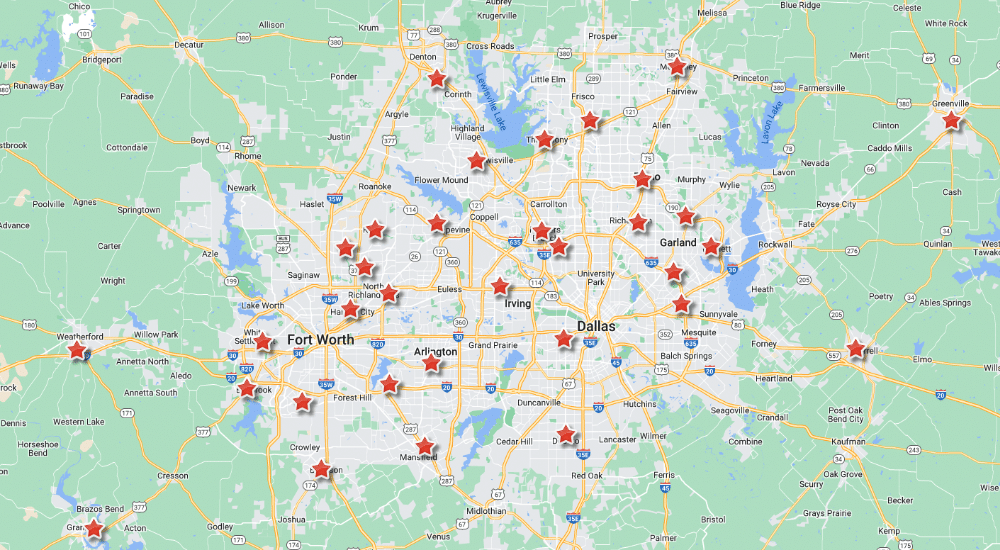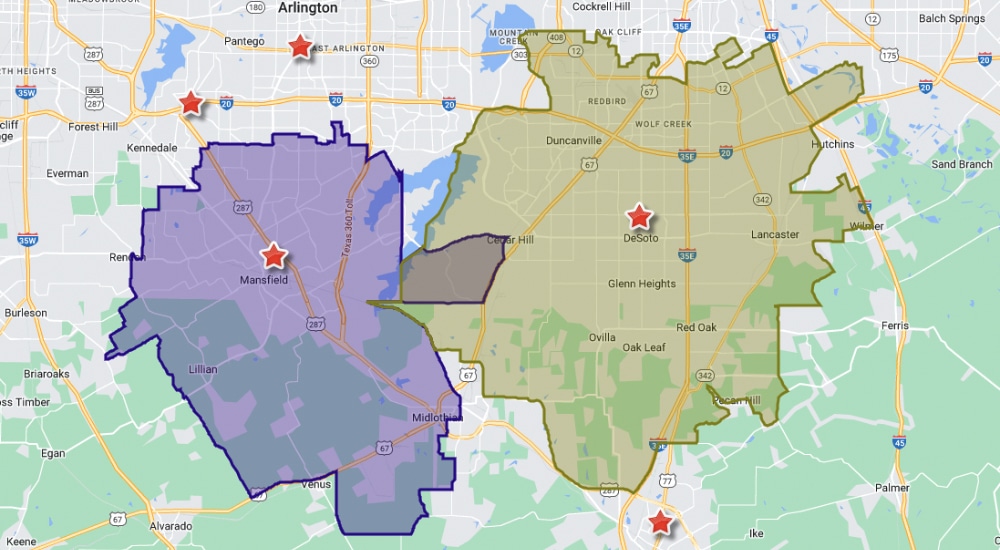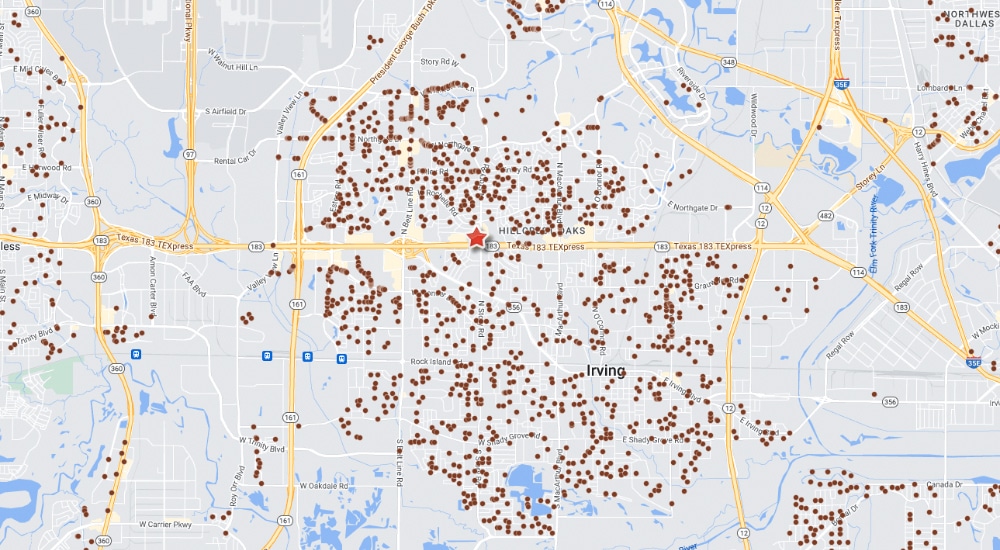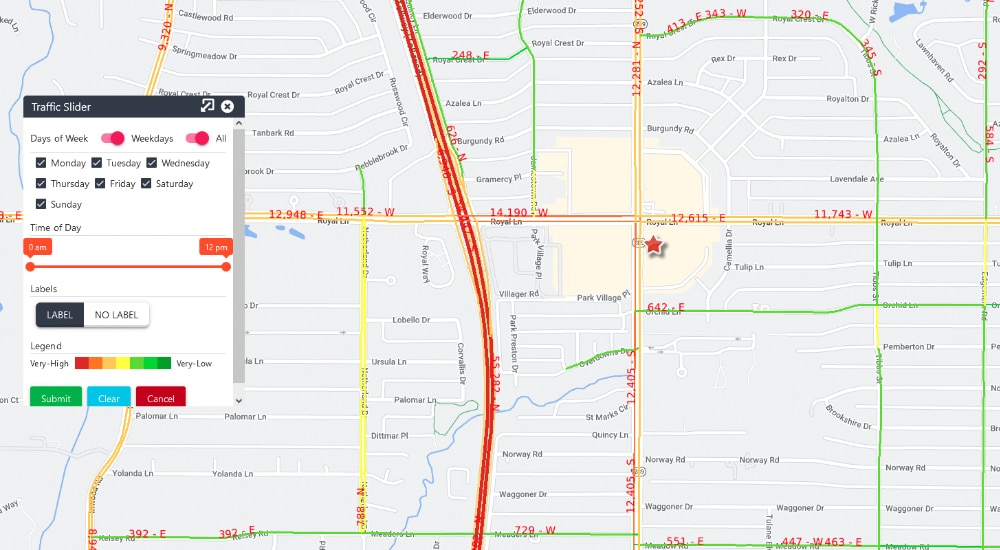Sometimes growth opportunities are obvious. Perhaps your customers regularly ask whether you provide a service or carry a product you don’t have yet. Or maybe there’s a real estate opportunity right in front of you that seems too good to pass up.
Other times, it takes research to find the areas where your business has the most room for growth. That’s where white space analysis comes in. White space analysis explores the gaps between your current products, services, or locations to discover untapped opportunities. There are many different approaches to this process, and the best methods depend on the types of “white space” you’re trying to identify.
When you want to use white space analysis to identify new products or services you should pursue, you’ll usually learn the most from interacting with customers and analyzing competitors. But when you want to find new trade areas to invest in or unsatisfied demand for your current offerings, you’ll need site selection software with GIS mapping capabilities to conduct market-level analysis.
This form of white space analysis is similar to void analysis, but the outcome is either an estimate of how much white space there is, such as an estimate of the number of locations a city, state, or country could support, or where specifically the white space is located.
Finding location opportunities with white space analysis
Here are the basics of how tools like Tango Predictive Analytics help retailers find new locations through white space analysis.
Put your stores on the map
First and foremost, if you want to find the growth opportunities that make the most sense for your business, you need to put your real estate portfolio on the map. Where are your stores, drive-thrus, or warehouses right now? Using GIS mapping, you can visualize all of your stores and then layer in more advanced data to see the opportunities around them.

Visualize your serviceable areas
Do you want to find your business’s white space? See how much geographic area you’re currently able to service. The gaps between your locations’ serviceable areas are worth examining more closely. Potential customers who live outside these areas face significantly more friction when visiting your business. They’ll likely patronize closer, more convenient businesses when they need the products or services you offer.
While it’s common to use a fixed radius (based on drive time, miles, or kilometers) to estimate each location’s serviceable area, it’s important to remember that this will vary by trade area as well. More rural locations tend to have a larger serviceable area geographically because there are fewer available alternatives, and residential and commercial spaces are typically further apart. Just make sure you don’t use a cookie-cutter approach to every trade area, and as you estimate serviceable areas, your rural, suburban, and urban locations should provide varying coverage.

You may also want to consider using geofencing to see how far people come to visit your stores. Using anonymized mobile data, Tango Predictive Analytics can track people who set foot in your stores, giving you a definitive visual representation of the outer limits of your serviceable areas and a better understanding of where most of your business comes from.

Find the demand
Anywhere you can’t currently service is technically white space, but you want to be strategic about which opportunities you capitalize on. Depending on your business and supply chain, finding white space between serviceable areas may make the most sense, or you may be looking to expand to new states, territories, or countries.
As you consider the possibilities, it’s vital that you hone in on the trade areas and locations with the greatest demand. You can find these areas using a combination of demographic data to compare broad opportunities and mobile data to isolate specific sites. Many prominent retailers rely on Tango’s demographic data to find trade areas with high concentrations of people matching their target audience’s demographics. Then they use our mobile data to track traffic flows throughout these areas.

Depending on why you’re conducting white space analysis, you may want to note any and all trade areas that could likely support a store, or build a prioritized list of locations you could expand to in the next few years. The latter will require more in-depth exploration, though; for that, your white space analysis will need to progress to site selection.
Quantify the opportunity
White space analysis is often used to gauge the breadth of growth opportunities facing your business. Some companies use this process to help secure funding or permits, demonstrating their business’s potential to grow with the right support. Depending on the scale of your operations, this process could validate the number of local, regional, national, or even international opportunities.
White space analysis is only the beginning
White space analysis is a valuable framework for taking inventory of your business’s growth opportunities. But when it’s time to make real estate decisions, you’ll need more advanced tools, capabilities, and processes to create accurate site models, forecast sales, and choose the best locations.
You’ll need a robust predictive analytics solution like Tango Predictive Analytics. Tango combines GIS mapping capabilities with mobile data and comprehensive site selection criteria, empowering you to make real estate decisions you can trust.
Want to see what Tango Predictive Analytics can do for you?